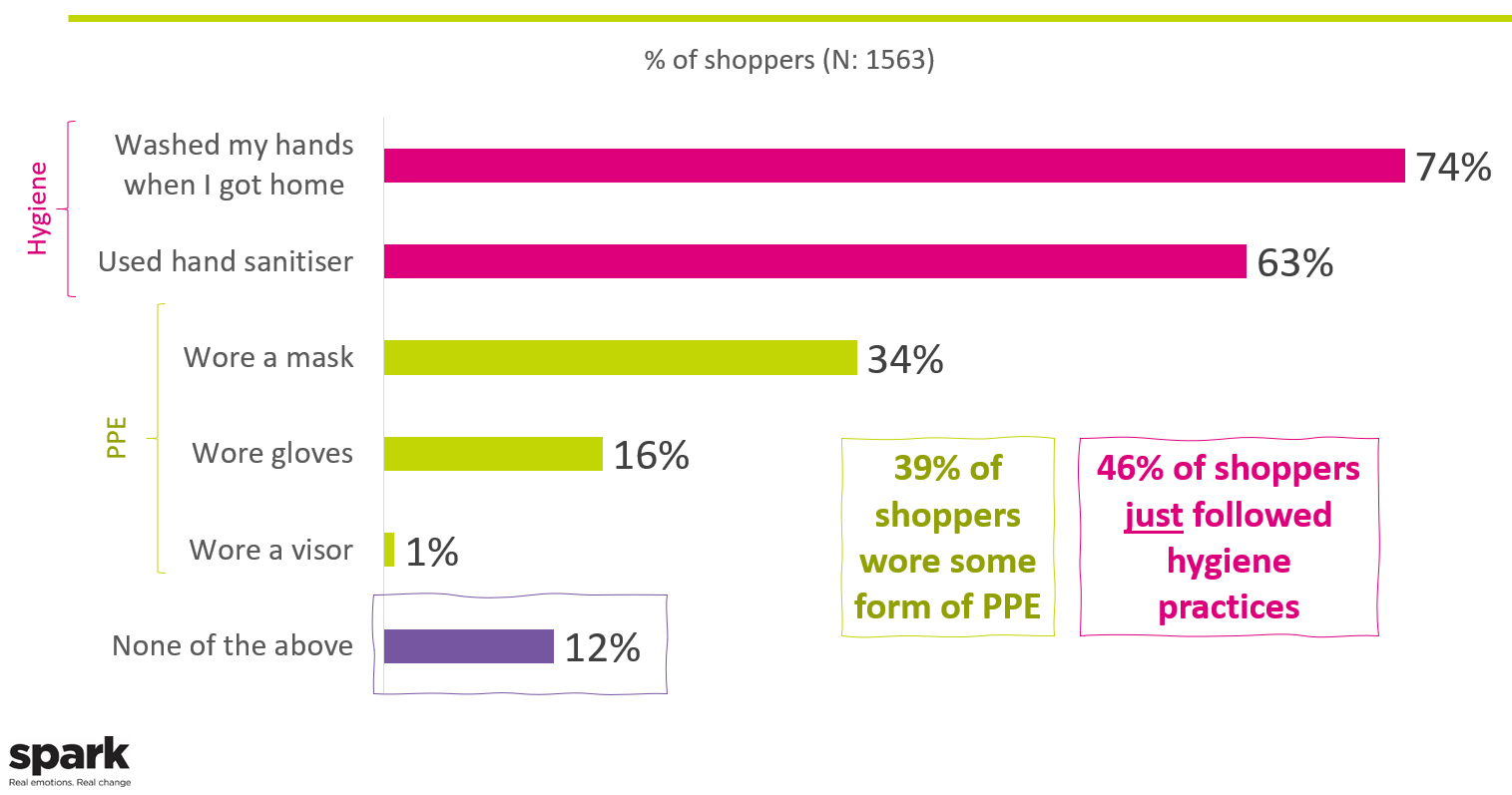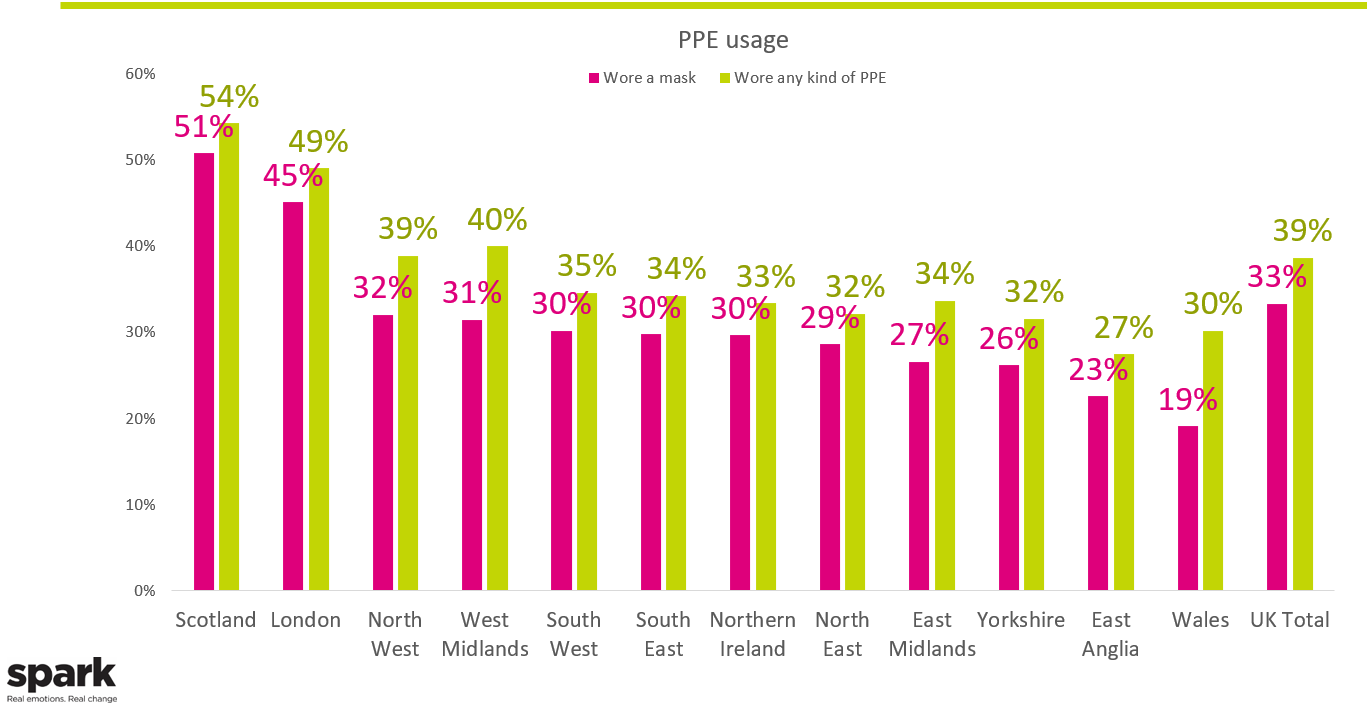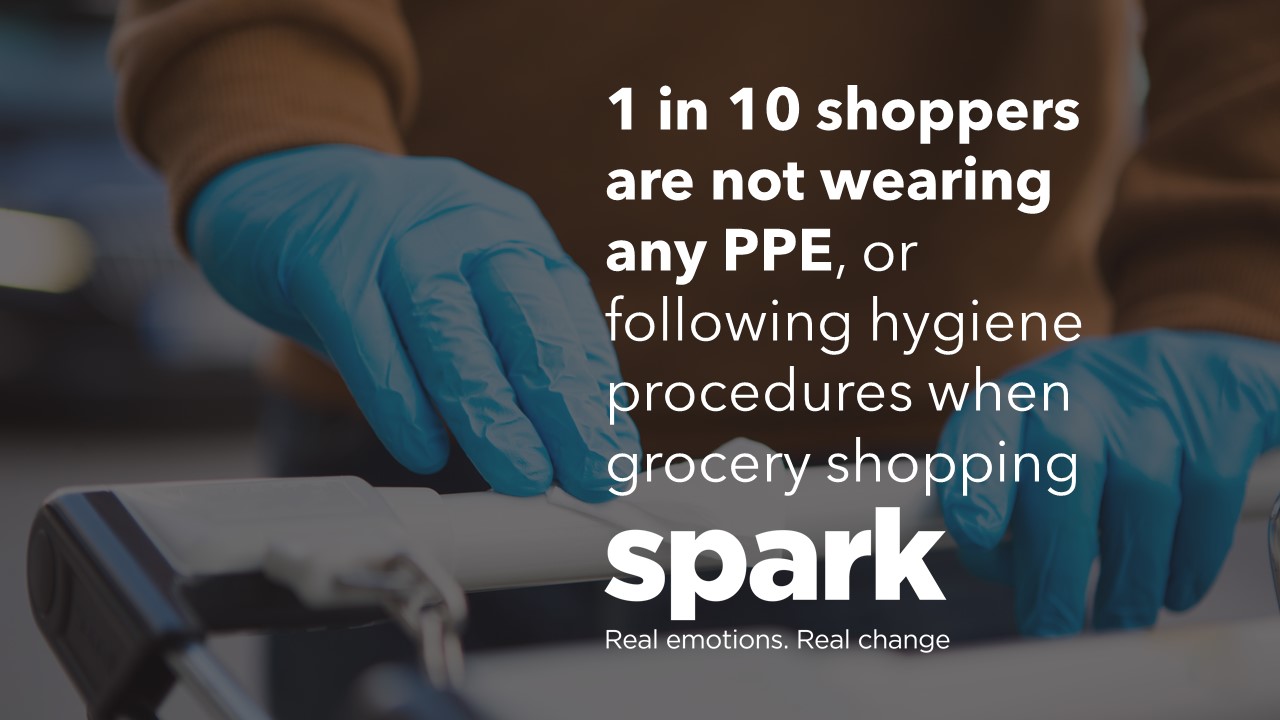With Coronavirus dominating the news, I’ve found it hard to sift through the headlines to find out what is happening on the shop floor in supermarkets around the country.
Whilst PPE and hygiene measures are essential during the pandemic, they drastically impact the way we touch, sniff, and engage with products on the shelf whilst grocery shopping. Based on our observational data of 50,000 of shoppers, we’d expect to see 61% of shoppers touching products on the shelf, and 22% of shoppers picking up and reading the packaging in detail (in an average supermarket aisle). Generally, shoppers who touch or read products are much more likely to end up buying the product. But if shoppers are wearing masks, or are more mindful of what they touch, how does this look now?
In order to answer this question, I first wanted to establish the figures around how many people are actually wearing PPE whilst shopping. With a little help from the great people at Panelbase, I wanted to understand what the PPE landscape was like when it comes to food shopping around the country.
We asked 1563 people between 08/07/20 – 09/07/20: “Which of the following safety precautions did you take on your last grocery shopping trip?”. The respondents were recruited through an opportunity sampling method, and could answer with multiple responses from pre-selected options.
It’s also worth bearing in mind that some people don’t like to admit to doing things that culturally they shouldn’t be doing…
What we found was both surprising and confirmatory in equal measure, but still has wide-ranging implications for how shopping behaviour is still changing in line with the spread of the virus.

The headline news is that around a third of shoppers are claiming to be wearing masks in store, which is good news in many ways, but when compared to countries like Germany (and now Scotland) with mandatory mask wearing, it certainly could be better.
The second nugget is that the majority of shoppers are following hygiene procedures when visiting stores, even if that’s the minimum precaution that they take. 46% of shoppers were only following these hygiene rules, and not wearing PPE.
But rather shockingly, 1 in 10 shoppers are still (freely admitting to) not taking any precautions whatsoever on their shopping trip. Like I say, these are only those willing to tell us this, so the number is probably higher…

Unsurprisingly, PPE usage in stores varies widely across the UK. The above chart shows that Scotland and London appear to have the most conscientious shoppers, with around half of shoppers saying that they are wearing masks. Wales on the other hand saw just 19% of respondents reporting that they are wearing a mask, with East Anglia not far in front. With Scotland now making masks mandatory in stores, this should cement Scotland’s dominance in PPE usage in the UK.
We’ve also seen that age is not playing a significant role, though the youngest and oldest shoppers were more likely to be wearing masks than the UK average.
This likely means that shopping behaviour has vastly changed from the numbers I talked about at the beginning, with conversion-to-purchase rates likely taking a hit alongside this.
With that in mind, how do we encourage shoppers to still engage with products at the shelf, whilst still enabling them to maintain (and increase use of) the correct safety precautions? And is this going to have long term effects after the pandemic is over, or will we revert back to our tactile selves?
If you’ve got any questions about this, or want to know more, feel free to get in touch!







